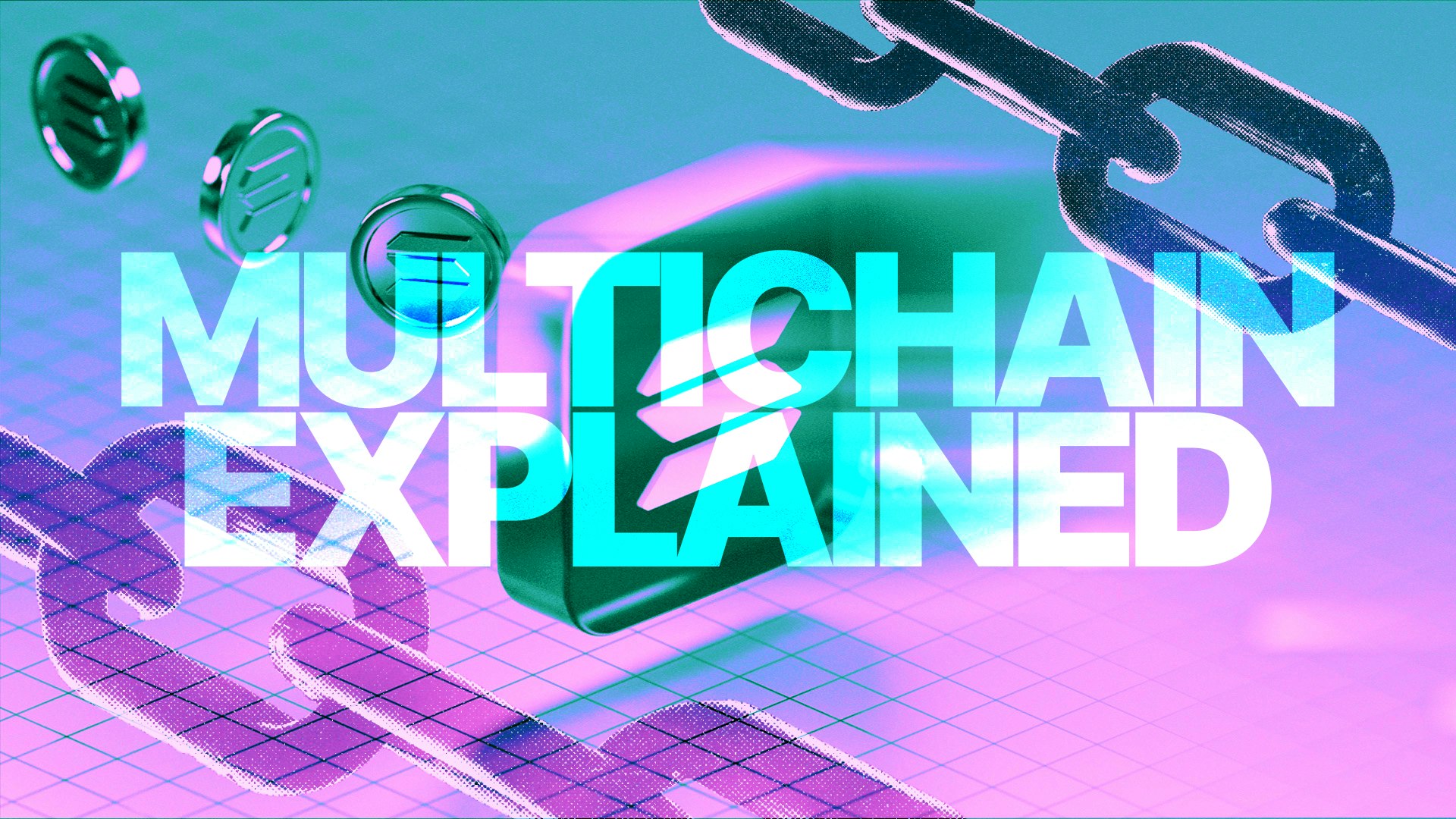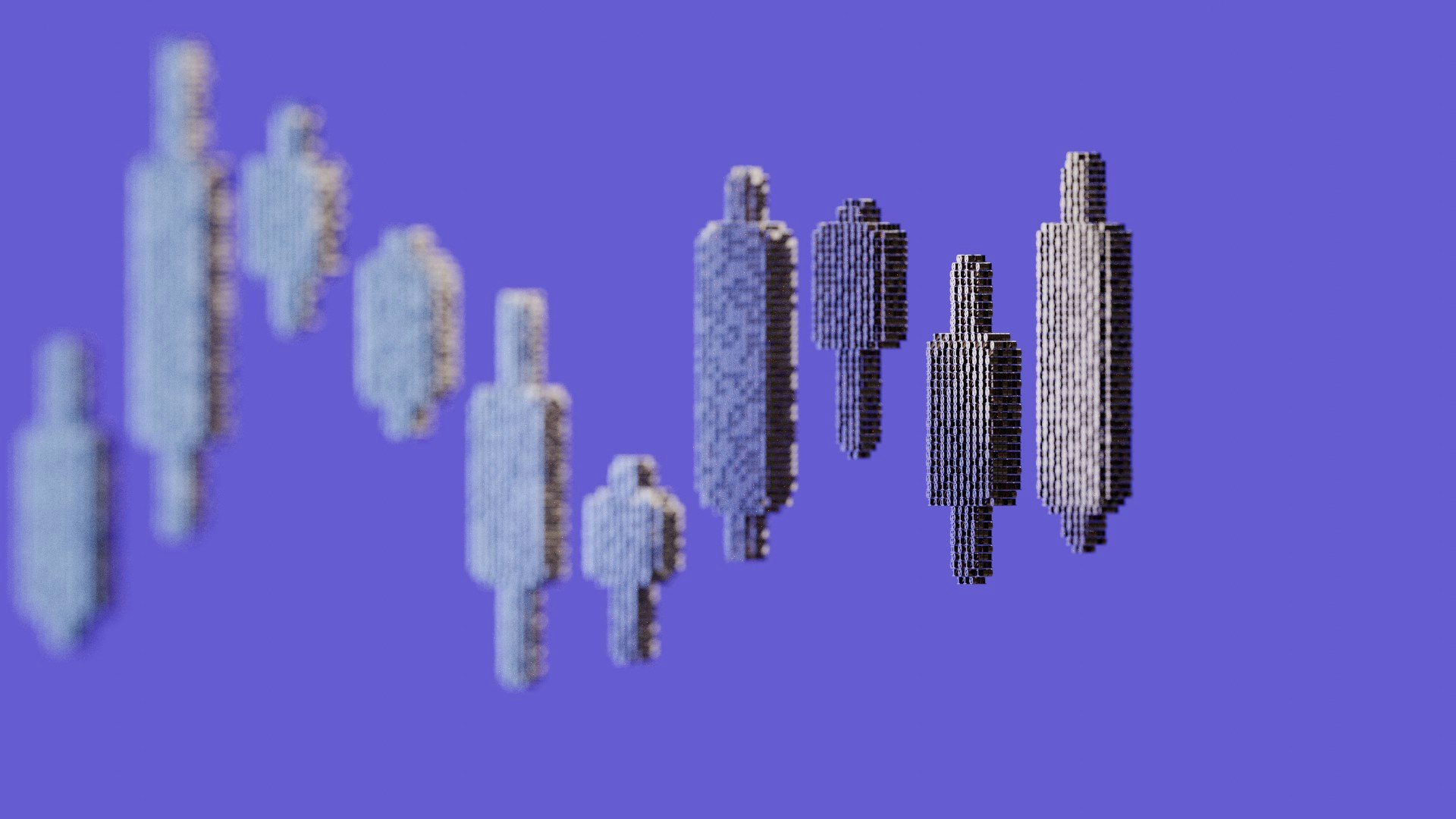Claim your free €20 Bitcoin bonus now! Just verify your ID. Weekly payouts every Friday! Don't invest unless you're prepared to lose all the money you invest.
What is Multichain in Crypto? Understanding Blockchain
What is multichain in crypto? It's increasingly in relevance, so here's what you need to know.
In this article...
- Explore interconnected blockchain networks.
- Expand your understanding of crypto.
- Providing options for transfers of crypto.

In technology or in crypto, you might have heard the term "multichain." But what exactly is it, and why is it becoming increasingly relevant?
Imagine different blockchain networks as separate islands. Each island has its own rules, currency, and way of doing things. Multiple chains, in essence, is like building bridges between these islands, allowing them to communicate and interact with each other.
It means that blockchain is developing into something that works better together, and it is a truly innovative technology if you are into blockchain and .
When Investors buy Bitcoin and the blockchain
When you from CoinJar, blockchain technology plays a crucial role.
The blockchain facilitates the settlement and clearing of the . Once the transaction is confirmed on the blockchain, it is considered final and irreversible, ensuring that both the buyer and the seller receive what they agreed upon.
The blockchain acts as the underlying technology that enables the protected, transparent, and decentralized transfer of Bitcoin when you buy it from CoinJar. Currently, not all blockchains communicate effectively with / "talk" to each other or operate together. But that is changing.
Why is multichain relevant?
Interoperability
This means the ability of different systems to work together. Multichain enables different blockchain networks to share information and value, making the whole ecosystem more connected and efficient.
Increased functionality
Think of each blockchain as having its own unique strengths. Multichain allows developers to tap into these strengths across different networks, leading to more powerful and versatile applications.
Scalability
As more people use blockchain technology, the networks can get congested, leading to slower transaction times. Multichain can help distribute the load across different networks, improving overall scalability.
Innovation
By breaking down barriers between blockchains, Multichain encourages collaboration and innovation, leading to the development of new and exciting use cases.
Interesting stuff
The most interesting thing about multiple chains all working together is the sheer potential it unlocks for collaboration across previously isolated blockchains. It's like finally bridging the gap between different countries that spoke different languages, allowing them to trade, share ideas, and build together.
The is now being adapted and extended to work with other blockchains.
Getting multiple chains to operate together is breaking down the "walled gardens" of individual blockchains, allowing users to freely roam and explore a much larger, interconnected crypto landscape.
Think of this as the "universal translator" of the blockchain world, enabling different networks to understand and communicate with each other seamlessly. It is shifting the narrative from blockchain competition to cooperation, encouraging projects to build on each other's strengths rather than trying to outdo each other.
How does multichain work?
There are different ways to achieve functionality with multiple chains, but they generally involve creating protocols and tools that allow different blockchains to communicate and share information in a protective manner.
Cross-chain Bridges: These are like the bridges that allow tokens or data to be transferred between different blockchains.
Sidechains: These are separate blockchains that are connected to a main blockchain, allowing for increased functionality and scalability.
Atomic Swaps: These enable the direct exchange of cryptocurrencies between different blockchains without the need for a centralised intermediary.
Multichain in action
This technology is already being used in various applications.
Decentralised Finance (DeFi)
Using multiple chains allows users to access a wider range of financial services across different blockchains.
Supply Chain Management
Multichain can improve transparency and traceability in supply chains by allowing different parties to share information across different networks.
Gaming
Multichain can enable the creation of more immersive and interactive gaming experiences by allowing players to own and trade assets across different games and blockchains.

The Future of Multichain
As blockchain technology continues to evolve, Multichain is expected to play an increasingly relevant role. By connecting different blockchains, Multichain has the potential to unlock a new wave of innovation and create a more interconnected and efficient blockchain ecosystem.
In conclusion, Multichain is a key concept in the blockchain world, enabling different networks to communicate and interact with each other. It has the potential to revolutionise the way we use blockchain technology, leading to more powerful, versatile, and scalable applications.
User experience will likely improve, taking away the complexities of interacting with multiple chains. Users may not even realise they're interacting with multiple blockchains.
Smart contracts could evolve to become "multi-chain aware," capable of executing complex logic across multiple chains.

Frequently asked questions
What is multichain and how does it enhance the user experience in the crypto world?
It is interconnected blockchains, and refers to the ability of decentralised applications (dApps) and smart contracts to interact seamlessly across multiple blockchains, not just the Ethereum network.
This interconnectedness, enabled by technologies like bridges and modifications to the Ethereum Virtual Machine (EVM), allows for a smoother and more integrated user experience.
Multi chain enables developers in the realm of decentralized applications. How?
Multichain solutions liberate developers from the limitations of a single chain, granting them access to a diverse array of functionalities and user bases across multiple networks.
What are the core advantages and challenges associated with multichain ecosystems?
Multichain ecosystems, fuelled by open-source development, pave the way for a more open, flexible, and user-friendly blockchain landscape.
They enable a richer user experience, greater developer freedom, and enhanced interoperability between different networks.
However, they also come with challenges such as increased complexity in development and maintenance, potential security risks arising from cross-chain interactions, and the intricacies of ensuring consistency across multiple chains with varying consensus mechanisms.
Native tokens often play a crucial role in navigating these ecosystems, facilitating transactions and incentivising participation.
Why might gamers benefit from multiple chains all talking to each other?
Multichain refers to the ability of blockchain projects to interact across multiple blockchains. For gamers, this means more opportunities to own and trade in-game assets, participate in cross-game events, and potentially earn real-world value from their gaming skills.
This means true ownership of in-game assets. It allows gamers to truly own their in-game items, characters, and other digital assets, which can be traded or sold on various marketplaces, regardless of the original game. Imagine using your favourite character or weapon across different games on different blockchains.
Gamers can have more opportunities to earn cryptocurrency rewards or NFTs through gameplay, tournaments, and other activities. These assets can potentially be converted into real-world money.
What are some challenges or concerns?
The technical aspects of multichain can be complex, and developers need to ensure seamless integration and user-friendly experiences.
Also, interacting with multiple blockchains might introduce new security risks that need to be addressed to protect digital assets.
As more games and users adopt multichain, the underlying infrastructure needs to be scalable to handle increased transaction volumes and activity.


Suggested Articles
ASI Merger: What is Happening With Fetch.ai (FET)?
Three AI companies have merged, but what does it mean for you?What is an Altcoin? What are Altcoins for?
The term altcoin is derived from two words: “alternative” and “coin.” It refers to any cryptocurrency other than Bitcoin.Bitcoin Mining Scam: What to Look Out For
The Bitcoin Mining Scam is a new online threat coming at us. Our compliance expert explains another sophisticated scam to look out for.Browse by topic

CoinJar Europe Limited (CRO 720832) is registered and supervised by the Central Bank of Ireland (Registration number C496731) for Anti-Money Laundering and Countering the Financing of Terrorism purposes only.
Apple Pay and Apple Watch are trademarks of Apple Inc. Google Pay is a trademark of Google LLC.
This site is protected by reCAPTCHA and the and apply.